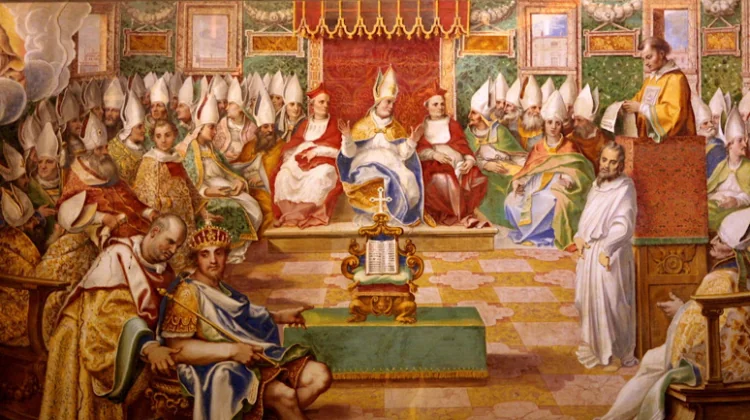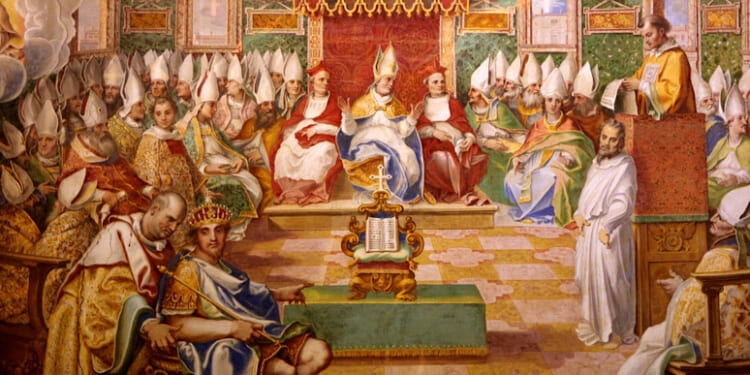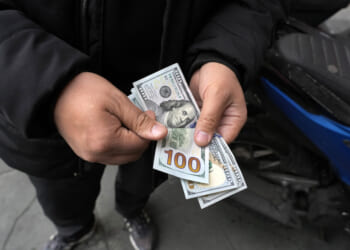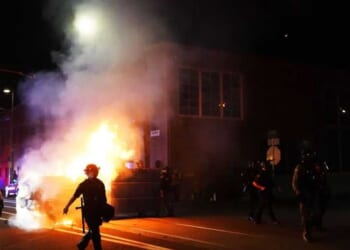
[Order Michael Finch’s new book, A Time to Stand: HERE. Prof. Jason Hill calls it “an aesthetic and political tour de force.”]
In the Roman (also known as Byzantine) Empire of the eighth century, there arose the idea that icons, the sacred images of Jesus Christ and the saints that were ubiquitous throughout the imperial domains, were a sinful manifestation of idolatry, and had to be stamped out. This was a religious controversy that roiled the Church for decades, but it also had larger implications. If it had been settled in a manner other than the way in which it was ultimately resolved, representational art in itself would have been declared sinful. The history of Europe would have been forever changed: no Michelangelo, no da Vinci, no Picasso.
In 787, the Roman Empress Irene summoned the bishops of the world to an ecumenical council, a meeting of all the world’s bishops, which like the very first of these synods was to be held in the city of Nicaea, not far from Constantinople. This council had the full support of the pope of Rome and the ecumenical patriarch of Constantinople, who had not yet split from one another. They knew that Irene favored the sacred images, and that the council was very likely to condemn iconoclasm anddeclare definitively that the icons were Orthodox. And that is exactly what it did.
As Empire of God: How the Byzantines Saved Civilizationexplains, this wasn’t just an obscure theological dispute from centuries ago. It also made a little-noted but inarguable contribution not just to the spiritual but to the artistic heritage of the human race. Without the restoration of the icons, the entire Western artistic tradition that developed from Christian religious art would have been imperiled. The Second Council of Nicaea was accepted among the Christians of the empire as the seventh ecumenical council, and the matter was generally considered settled, although iconoclasm would reappear in the empire—once again imposed by an emperor—twenty-seven years after the council. To this day, the teachings of the Orthodox and Roman Catholic Churches on the issue of sacred images is based on the teachings of the second Nicene council.
The influence of the Second Council of Nicaea goes beyond thechurches and even beyond Christianity itself. Once the controversy over images was definitively settled, there was aflowering of artistic expression in both the empire and Western Europe. Western art developed from the Church’s iconographic tradition; one can see the relationship immediately by comparing early Medieval Western art to Orthodox iconography of the same period. In the West, secular art developed from artistic expression that was initially taking place in a religious context.
Leonardo, Michelangelo, Picasso—the entire Western artistic tradition might have been stunted, or never existed at all, if the church had rejected images at the Second Council of Nicaea. After all, iconoclasm was influenced by Islam, which forbids representation of the human form as a temptation to idolatry. Hence in the Islamic world, there is some representational art, but compared to the Western artistic tradition, quite little. If iconoclasm had prevailed, Byzantine and Western European art might have developed in much the same direction, with the primary emphasis on calligraphy, mosaic designs, and the like.
One of the most enduring and important legacies of the Roman Empire in its Byzantine period is the approval it gave to representational art, which led to an unprecedented and unparalleled development of such art, and an ever-deepening appreciation of the possibilities of visual art to communicate the complex and hidden realities of the human soul.
The eighth century is commonly considered to be part of the “Dark Ages,” an age of declining educational standards in many areas, declining standards of living, and a general retreat from the high civilization that Romans had not only enjoyed, but with which the Roman Empire had practically become synonymous. Much of this decline can be traced to the reduced population in the wake of the plague, which broke out again several times after the first outbreak during Justinian’s reign; the last time wasin the middle of the eighth century. The outbreaks led to a reduced population, the contraction of cities, and the reduction of public services. This century was certainly a dark time for the empire, with iconoclasm threatening its internal unity and Islam threatening its very life. No one would regard the eighth century as part of the empire’s glory days; however, in important ways these dark days were just that. It was in the resistance to both that notable seeds were planted, including those that would lead to the empire’s resurgence and of the coming glory of Renaissance Europe.
Modern-day Westerners have entirely forgotten on whose shoulders they stand.















